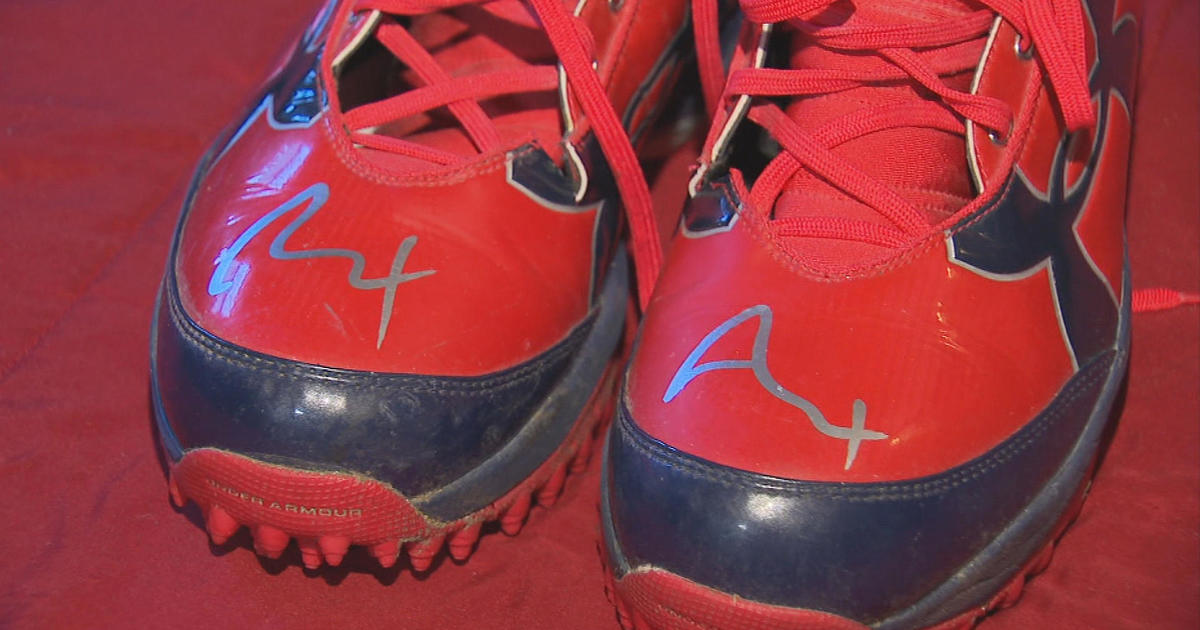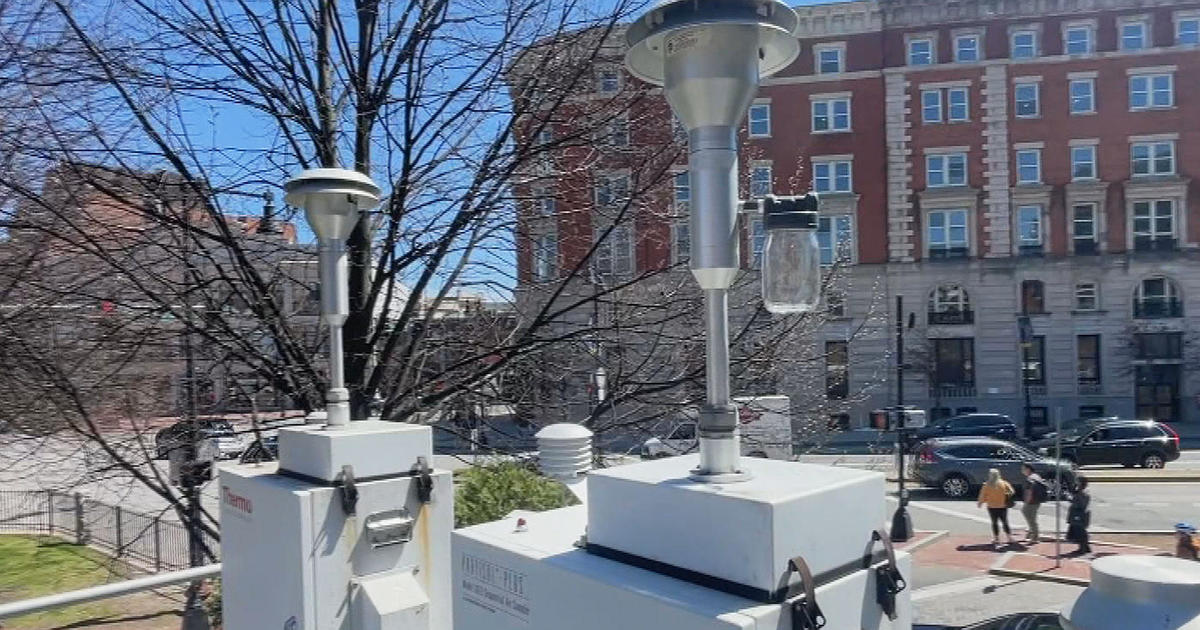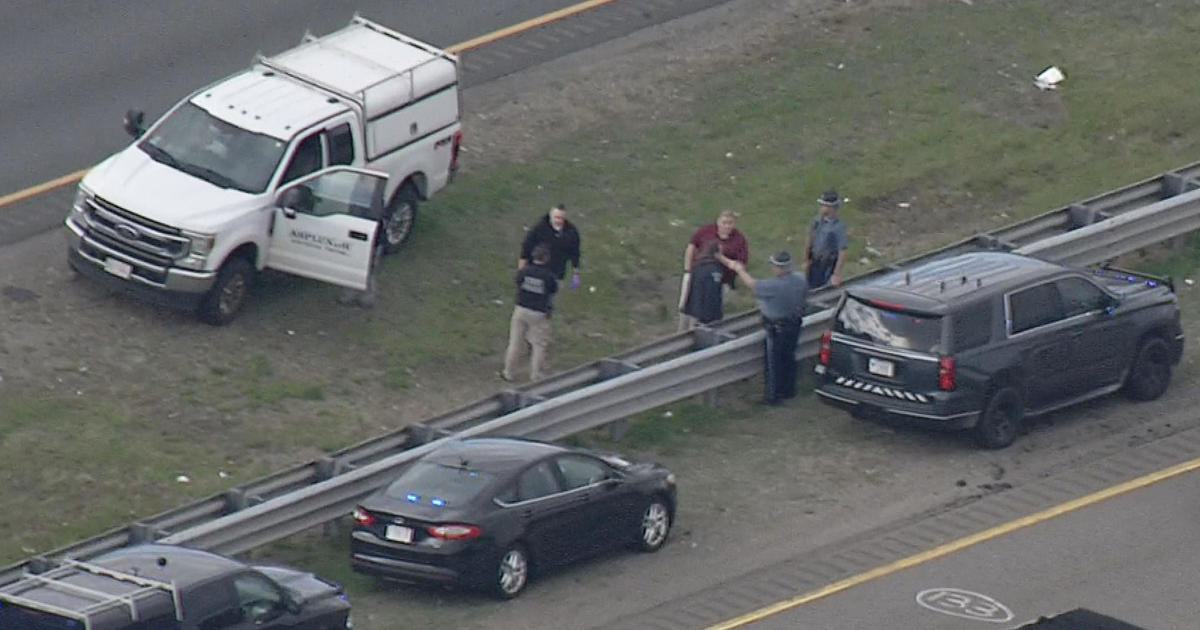Crumbling White Paint Lines Have Costly Solution
 WBZ
WBZ
There's something strange happening on some Massachusetts highways, and it's only happening underneath the markings painted on the roads.
Many are asking about it on WBZ's Curiosity Web site.
Kibbey from Taunton wants to know: "What the heck is up with the stuff they use to make lines on Mass. roads?"
And Gayle from Randolph says: "I'm Curious why the blacktop is crumbling under the white lines? The rest of the road is in great shape."
Well David Wade found out what's up, but you might not like the costly answer.
"Wherever the white paint is...it's gone," says Lou Cabana, driving down Route 24.
Like a child with a crayon, Cabana tries to stay inside the lines, because the white lines on the highway, have turned into mini-potholes, while the areas between the lines are just fine.
"I think it's an incompetence, and I think it's just negligence," he says.
WHAT CAUSES THE LINES TO CRUMBLE?
The culprit is actually the material that was used to make the white lines, which is called thermoplastic. Combining the thermoplastic with a particular type of asphalt, and adding a heavy dose of salt and snow, created the problem.
"The two good ideas just didn't work out well together," says Professor Jim Lambrechts, a highway expert at Wentworth Institute.
This is what he says happened: "The asphalt surface that was used is sort of like a sponge where the water goes into it and drains off the pavement," says Lambrechts. "But the problem with the thermoplastic paint is that it blocked the flow of water. Eventually this asphalt loosens up because it's freezing and thawing and heaving."
The result is deterioration of the surface underneath the lines. The state has already spent $120,000 fixing potholes on Route 24 and I-495. It's also effecting other roads. Route 3 is a mess, and you'll see it on part of 93 and 128.
SO WHO'S AT FAULT?
"It's about accountability. I mean somebody has the job to make sure these things don't happen," says Lou Cabana.
Luisa Paiewonsky is the state's highway commissioner.
"This should not have been put on this type of highway given these types of winter conditions," she says.
But she also says they just didn't know the combination of thermoplastic material and a certain type of asphalt would break down.
Why didn't testing pick up the potential for a problem?
"Well, testing doesn't always take into account every kind of condition," Paiewonsky says. "And this was a combination that had been tried in the past, but the winter just sort of put it over the edge."
Now they're going to repave Route 24. That job was already in the pipeline, but is being done sooner than it would have been if the combination hadn't failed. And since the thermoplastic and the asphalt by themselves were fine, Paiewonsky says she can't go after anyone to recover costs.
"While it's always tempting to look for a person or a company to blame, in this case I think it was really more of a lesson learned," she says.
AN EXPENSIVE LESSON
The state actually discovered problems several years ago and stopped using the thermoplastic-asphalt combination, but we're still suffering the results.
We did this story because viewers asked us to. You can do the same. Go to www.wbztv.com/curious and tell us what you want to know.
© MMX, CBS Broadcasting Inc. All Rights Reserved.



